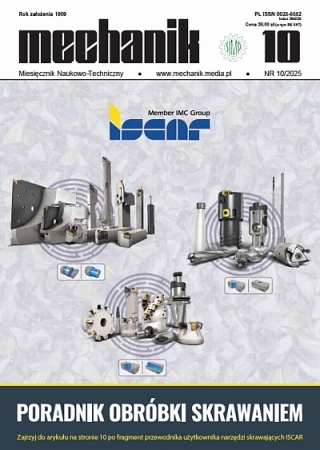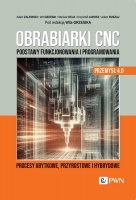Założenia mechatronicznego systemu wspomagania rehabilitacji palców wykorzystującego rzeczywistość wirtualną i gry komputerowe
Concept of the robotic system for hand rehabilitation using computer games and virtual reality
Mechanik nr 07/2015 - Artykuły z XIX Międzynarodowej Szkoły Komputerowego Wspomagania Projektowania, Wytwarzania i Eksploatacji zamieszczone płycie CD
STRESZCZENIE: W artykule opisano prowadzone w Centralnym Instytucie Ochrony Pracy – Państwowym Instytucie Badawczym prace na rzecz stworzenia mechatronicznego systemu wspomagania rehabilitacji palców wykorzystującego rzeczywistość wirtualną i gry komputerowe. W ramach dotychczasowych prac opracowano system wspomagania rehabilitacji kończyn górnych z wykorzystaniem techniki rzeczywistości wirtualnej. Program rehabilitacyjny ubrany został w atrakcyjną formę gry komputerowej prezentowanej pacjentowi za pomocą sprzętu rzeczywistości wirtualnej. Celem obecnych prac jest opracowanie systemu mechatronicznego poszerzającego możliwości opracowanego w ramach poprzednich prac systemu wspomagania rehabilitacji o:
- możliwość wykonywania ruchów czynnych w stawie promieniowo-nadgarstkowym i w stawach palców,
- możliwość wykonywania ruchów biernych w wybranych stawach w obrębie ręki.
SŁOWA KLUCZOWE: egzoszkielet, rehabilitacja, robot.
ABSTRACT: The article describes works conducted in the Central Institute for Labour Protection – National Research Institute aimed at creating a robotic system for hand rehabilitation using computer games and virtual reality. In the context of previous work the upper limbs rehabilitation system was developed. Rehabilitation program was dressed in an attractive form of a computer game presented to the patient by means of virtual reality equipment. The aim of the present study is to develop the robotic system expanding capabilities of the system developed in the previous workby:
- the ability to perform active movements in the wrist and finger joints,
- the ability to perform passive movements in selected joints of the hand.
KEYWORDS: exoskeleton, rehabilitation, robot.
BIBLIOGRAFIA / BIBLIOGRAPHY:
- [1] Van der Lee J.H., Snels I.A., Beckerman H., G. Lankhorst J., Wagenaar R.C., and Bouter L.M.: Exercise therapy for arm function in stroke patients: a systematic review of randomized controlled trials, Clin. Rehabil., Vol. 15, No. 1, 2001, pp. 20-31.
- [2] Bassett S.F.: The assessment of patient adherence to physiotherapy rehabilitation, N. Z. J. Physiother, Vol. 31, No. 2, 2003, pp. 60-66.
- [3] Engström L.O. and Öberg B.: Patient adherence in an individualized rehabilitation programme: A clinical follow-up, Scand. J. Public Health, Vol. 33, No. 1, 2005, pp. 11-18.
- [4] Maclean N., Pound P., Wolfe C., and Rudd A.: Qualitative analysis of stroke patients’ motivation for rehabilitation, Bmj, Vol. 321, No. 7268, 2000, pp. 1051-1054.
- [5] Butterworth S.W.: Influencing patient adherence to treatment guidelines, J Manag Care Pharm, Vol. 14, No. 6, Suppl B, 2008, pp. 21-4.
- [6] Holden M.K.: Virtual environments for motor rehabilitation: review, Cyberpsychol. Behav., Vol. 8, No. 3, 2005, pp. 187-211.
- [7] Merians A.S., Fluet G.G., Qiu Q., Saleh S., Lafond I. and Adamovich S.V., Integrated arm and hand training using adaptive robotics and virtual reality simulations, in Proceedings of the 2010 International Conference on Disability, Virtual Reality and Associated Technology, 2010, pp. 213-222.
- [8] Klimasara W.J., Bratek A., Pachuta M., and Pilat Z., Systemy mechatroniczne w rehabilitacji ruchowej, Pomiary Autom. Robot., tom R. 13, nr 2/2006, 2009, s. 577-586.
- [9] Hsieh Y., Lin K., Wu C., Lien H., Chen J., Chen C., and Chang W., Predicting Clinically Significant Changes in Motor and Functional Outcomes After Robot-Assisted Stroke Rehabilitation, Arch. Phys. Med. Rehabil., Vol. 95, No. 2, pp. 316-321, Feb. 2014.
- [10] Staubli P., Nef T., Klamroth-Marganska V., and Riener R., Effects of intensive arm training with the rehabilitation robot ARMin II in chronic stroke patients: four singlecases, J. NeuroEngineering Rehabil., Vol. 6, No. 1, 2009, p. 46.
- [11] Susman E., Can a Robot Help in Rehabilitation for Stroke Patients?, Neurol. Today, Vol. 10, No. 8, 2010, pp. 8.
- [12] Broeren J., Pareto L., Johansson B., Ljungberg C., and Rydmark M., Stroke rehabilitation using m-Health Care and 3D virtual environments: work in progress, in Proceedings of the 8th International Conference on Disability, Virtual Reality and Associated Technologies, 2010.
- [13] Budziszewski P., A Low Cost Virtual Reality System for Rehabilitation of Upper Limb, in Virtual, Augmented and Mixed Reality. Systems and Applications, Springer, 2013, pp. 32-39.
- [14] Budziszewski P., Zastosowanie kontrolera Kinect oraz zestawu czujników inercyjnych do rejestracji ruchu człowieka dla potrzeb rzeczywistości wirtualnej oraz sterowania, Pomiary Autom. Robot., R. 16, nr 2/2012, 2012, s. 189-193.
- [15] Budziszewski P., Wykorzystanie rzeczywistości wirtualnej do rehabilitacji kończyn górnych, Mechanik, R. 84, nr 7(CD), 2011, s. 65-72.
- [16] Heo P., Gu G. M., Lee S., Rhee K., and Kim J., Current hand exoskeleton technologies for rehabilitation and assistive engineering, Int. J. Precis. Eng. Manuf., Vol. 13, No. 5, pp. 807–824, May 2012.


























